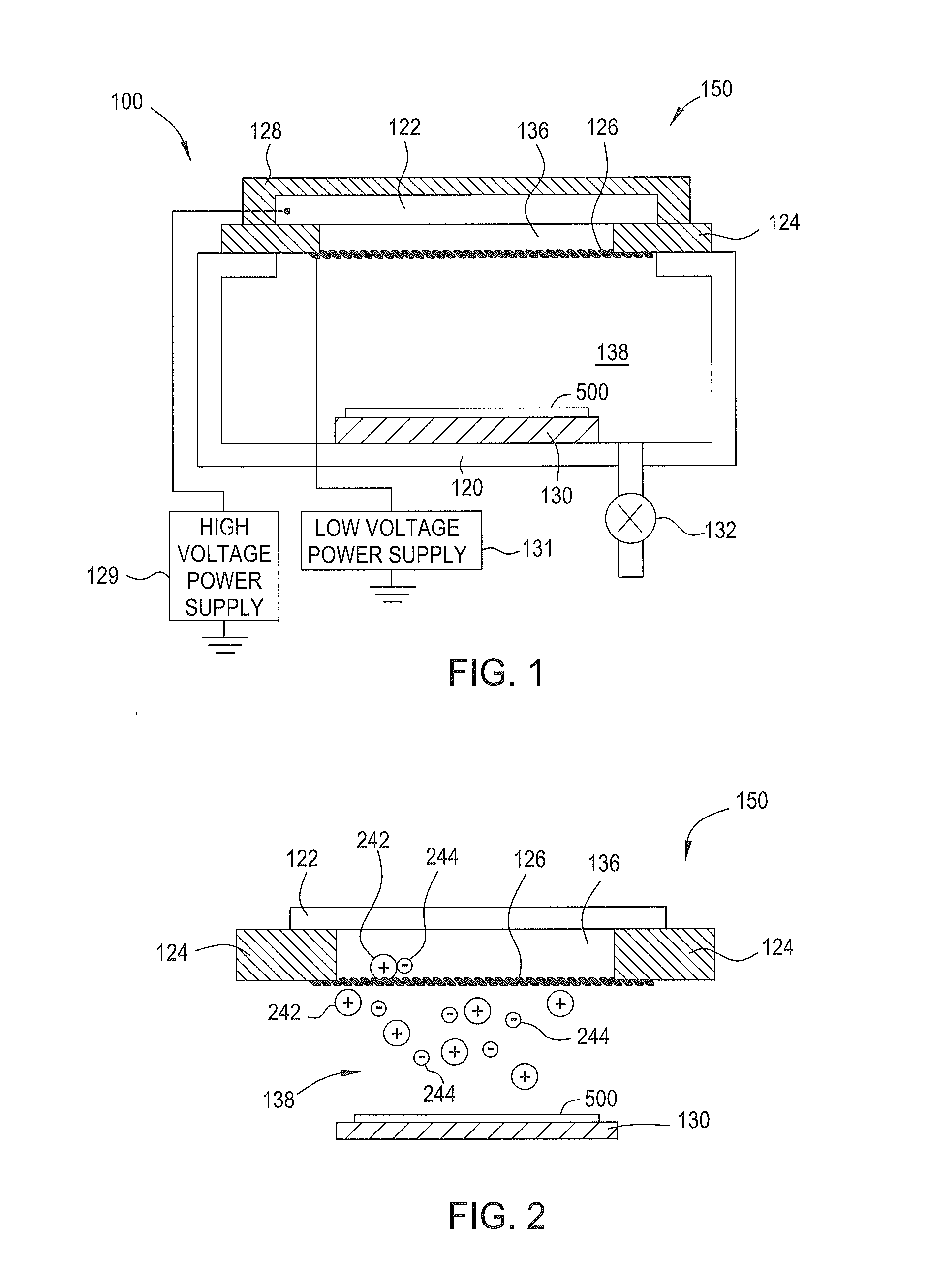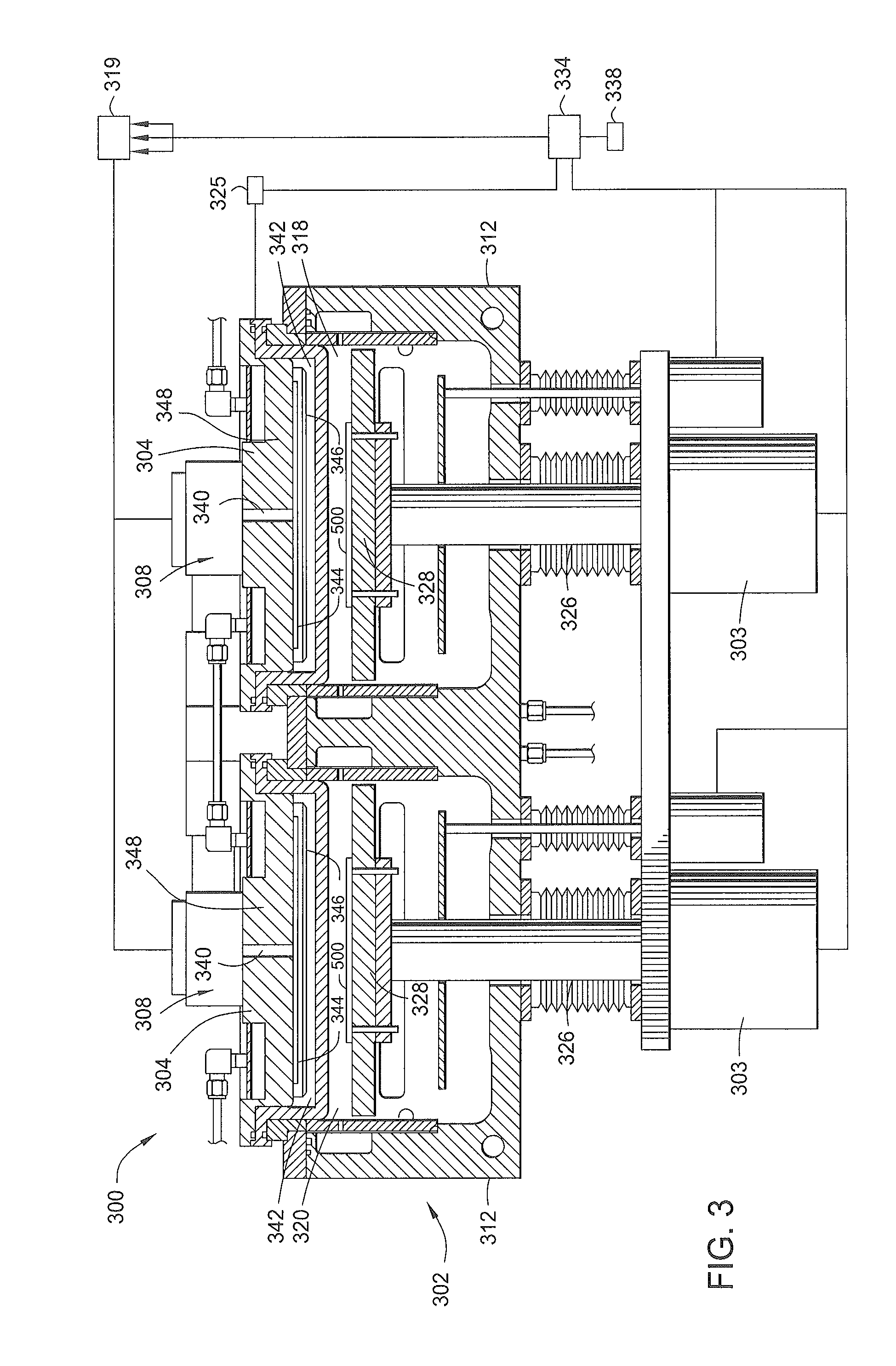Methods for improving etching resistance for an amorphous carbon film
a technology of amorphous carbon film and etching resistance, which is applied in the field of process improvement and etching resistance improvement, can solve the problems of insufficient masking, insufficient pattern transfer accuracy, and complex devices of integrated circuits, and achieve the effect of high etching resistan
- Summary
- Abstract
- Description
- Claims
- Application Information
AI Technical Summary
Benefits of technology
Problems solved by technology
Method used
Image
Examples
Embodiment Construction
[0020]The present invention provides a method of performing an electron beam treatment process on an amorphous carbon layer to form a treated amorphous carbon layer with high etching resistance. In one embodiment, the amorphous carbon film is suitable for use as a hardmask layer. During the electron beam treatment process, the energy provided by the electron beam densifies the film structure of the amorphous carbon film, thereby producing the amorphous carbon layer with high density along with high etching resistance. The electron beam treated amorphous carbon film have desired mechanical properties, such as high density, hardness and suitable range of stress, which provides high film selectivity and etching resistance to other material layers for the subsequent etching process, thereby enabling good pattern transfer of small features to the underlying film stack with good profile control. Additionally, the electron beam treated amorphous carbon film also provides desired optical fi...
PUM
| Property | Measurement | Unit |
|---|---|---|
| current | aaaaa | aaaaa |
| current | aaaaa | aaaaa |
| bias voltage | aaaaa | aaaaa |
Abstract
Description
Claims
Application Information
 Login to View More
Login to View More - R&D
- Intellectual Property
- Life Sciences
- Materials
- Tech Scout
- Unparalleled Data Quality
- Higher Quality Content
- 60% Fewer Hallucinations
Browse by: Latest US Patents, China's latest patents, Technical Efficacy Thesaurus, Application Domain, Technology Topic, Popular Technical Reports.
© 2025 PatSnap. All rights reserved.Legal|Privacy policy|Modern Slavery Act Transparency Statement|Sitemap|About US| Contact US: help@patsnap.com



